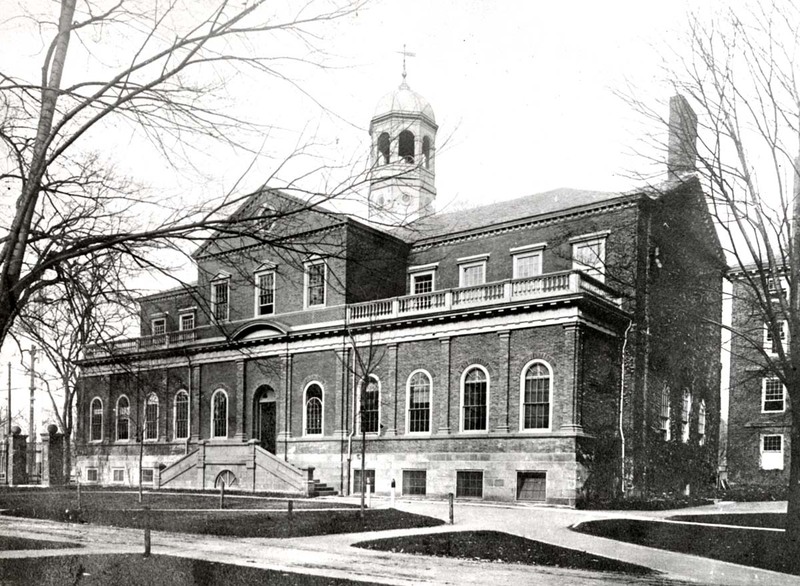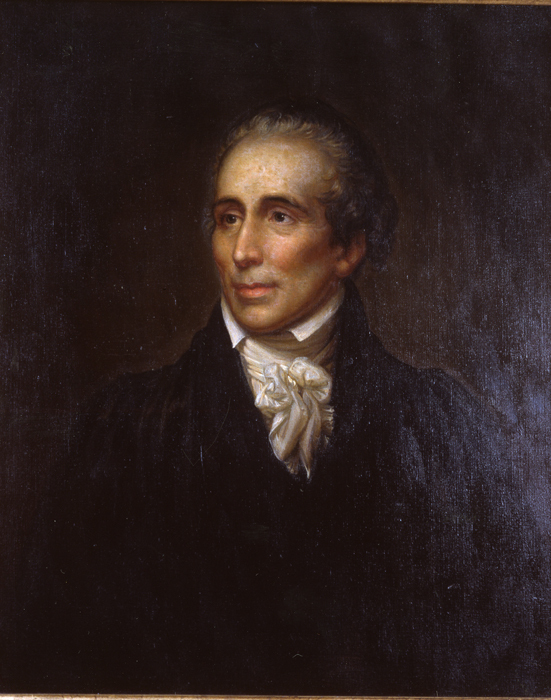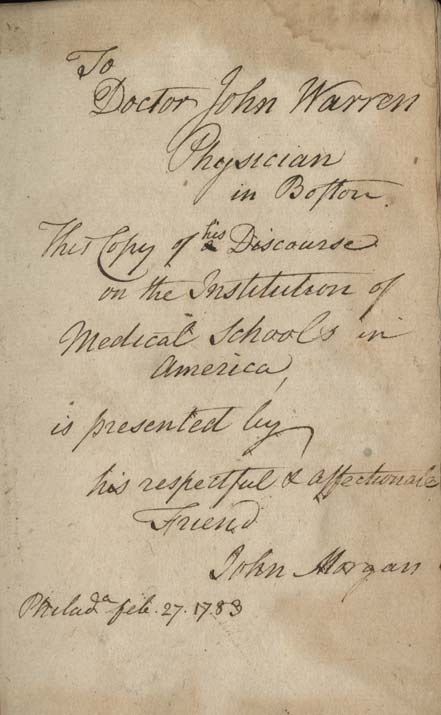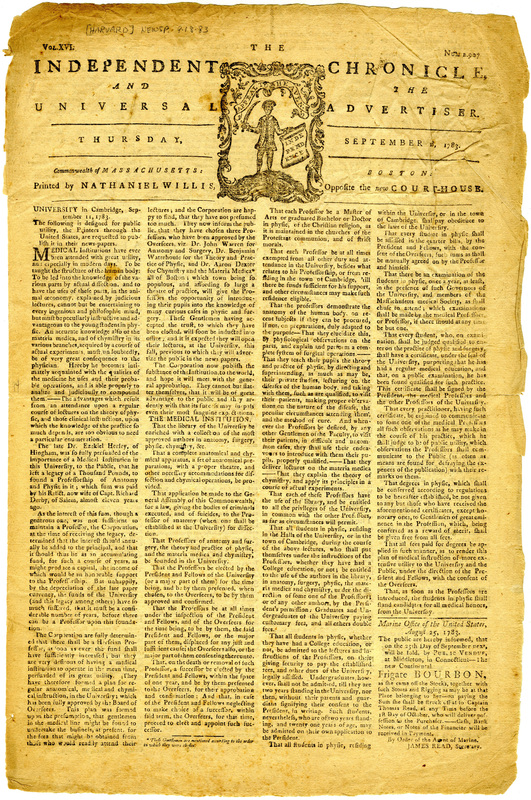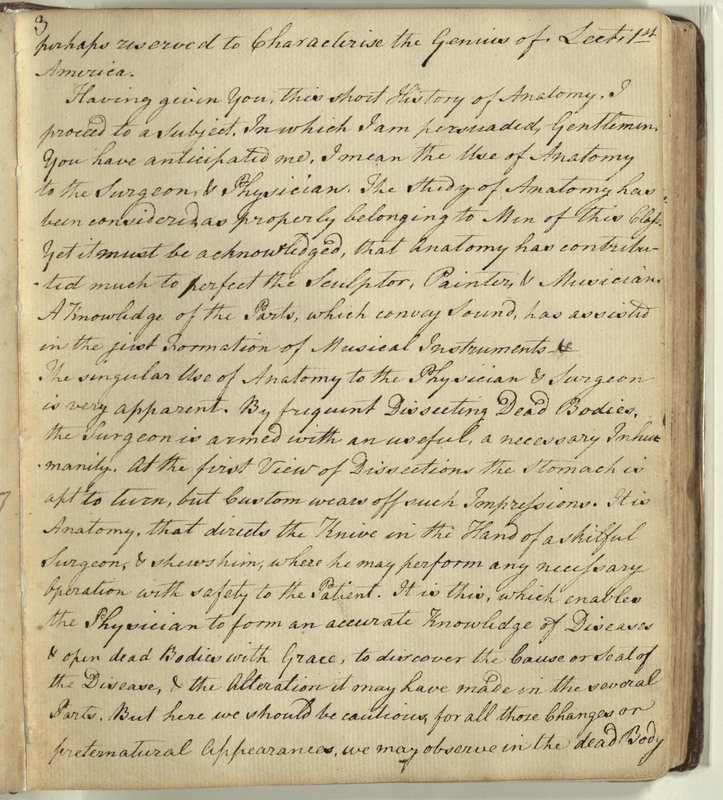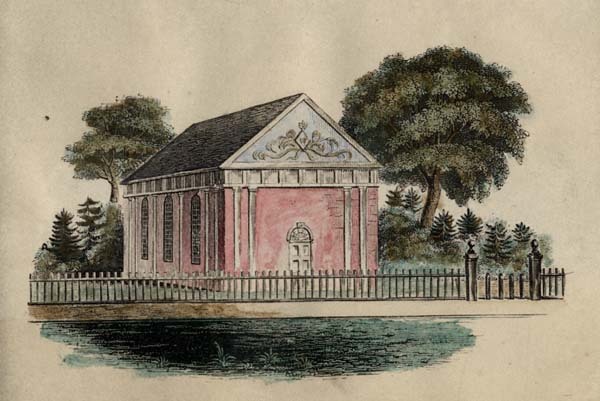The Foundation of Harvard Medical School
Though not the first American medical school to be established, Harvard holds the distinction of being among a handful of institutions founded in the 18th century and, of that number, one of the very few still in existence today.
In 1780, during the Revolutionary War, surgeon John Warren (1753-1815) began to deliver anatomical lectures to physicians at the military hospital in Boston. Warren went on to deliver public lectures during the winter of 1781-1782, at the invitation of the Boston Medical Society. The success of these lectures prompted the Harvard Corporation to approach Dr. Warren to devise a plan and course of medical study. On September 19, 1782, the Corporation adopted a detailed plan for medical study in Cambridge, including the formation of a library "more perfect than any in America," acquisition of medical apparatus, facilities, and anatomical preparations, and the establishment of professorships of anatomy and surgery, physic, and chemistry. This plan became the basis for Harvard Medical School. John Warren was appointed to the professorship of anatomy and surgery in November, and two other faculty appointments—Benjamin Waterhouse (1754-1846), to the professorship of the theory and practice of physic, and Aaron Dexter (1750-1829), to chemistry and materia medica—were made soon after.
The first book to be published on medical education in America was written by Dr. John Morgan, who founded the Medical Department of the University of Pennsylvania, the nation’s first medical school, in 1765. This particular copy is notable for its fly-leaf presentation inscription from Morgan himself to Dr. John Warren (1753-1815) in 1783, just after Warren had been charged by the Corporation of Harvard College with the formation of a plan for medical instruction. This was the beginning of Harvard Medical School.
In his will, Hingham physician Ezekiel Hersey bequeathed £1,000 to the Harvard Corporation to fund a professorship in anatomy and physic [physiology]. Although it took some years for the Corporation to establish a program of medical study, in 1792, the Hersey legacy was used to endow the first two chairs at the Harvard Medical School—the professorship of anatomy and surgery, filled by John Warren, and the professorship of the theory and practice of physic, filled by Benjamin Waterhouse.
This local newspaper was one of the first to report the formation of the Harvard Medical School following the plan devised by Dr. John Warren for the Harvard Corporation. The article announces the appointment of the first three faculty members and outlines the intended curriculum of anatomy, physic, and chemistry, along with information on admission requirements and fees.
Partially in the handwriting of Dr. John Warren, this volume of lecture notes, beginning on December 10, 1783, contains the earliest surviving record of teaching at Harvard Medical School. The lectures were delivered in Harvard Hall, on the campus in Cambridge.
After summarizing the history of his subject, Dr. Warren then justifies dissection as an essential component to anatomical study: “At the first view of dissections, the stomach is apt to turn, but custom wears off such impressions. It is anatomy that directs the knife in the hand of a skilful surgeon, & shews him where he may perform any necessary operation with safety to the patient. It is this which enables the physician to form an accurate knowledge of diseases & open dead bodies with grace, to discover the cause or seat of the disease, & the alteration it may have made in the several parts.”
Formal medical instruction began late in the autumn of 1783, and students attended lectures in the basement of Harvard Hall, a structure still standing and in use today. By 1797, the condition of this facility was described—at least for Aaron Dexter's lectures on chemistry—as "unhealthy, inconvenient, and disgraceful," and new space was then provided in Holden Chapel by 1800. One room each was allotted to the professors of physic and chemistry, and John Warren's anatomical and surgical lectures and demonstrations were delivered in the room above. It was just the first of many moves the Medical School would make in its history.

